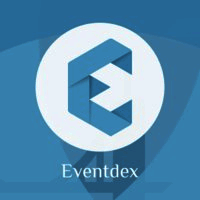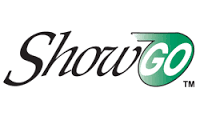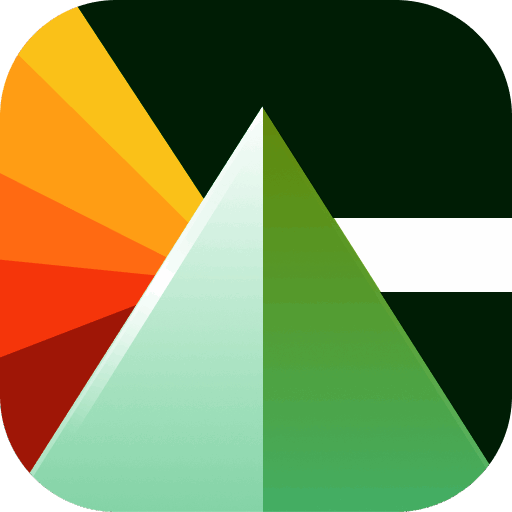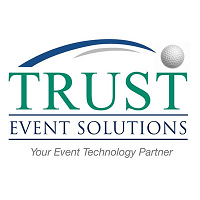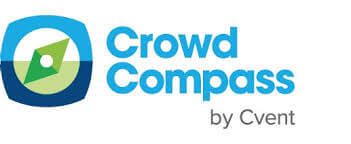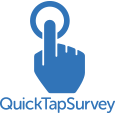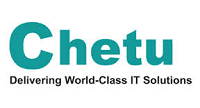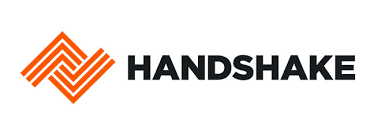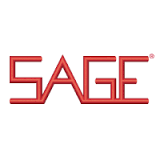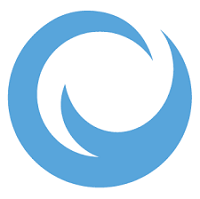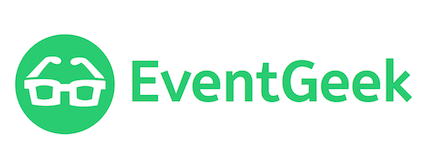What Is Trade Show Software?
Trade show software is a comprehensive solution that simplifies and streamlines the planning, management, and execution of trade exhibitions and events. It combines a variety of tools and features to assist businesses of all kinds and industries in effectively promoting their products and services, attracting potential consumers, and generating leads.
Trade show software's primary functions include booth design and management, online event registration, lead collection and tracking, scheduling and appointment setting, floor mapping, and data analysis. These features are intended to provide trade show exhibitors with a consolidated platform for planning, coordinating, and executing a successful event. One of the primary advantages of employing trade show software is its ability to improve the overall attendee experience.
With configurable floor maps and interactive elements, attendees can quickly browse the event and learn about the exhibitors and their goods. This not only boosts engagement and connection, but also raises the likelihood of lead conversion. Furthermore, trade show software provides powerful lead collecting and tracking features. This enables firms to capture vital client data, such as contact information and interests, for follow-up and future marketing campaigns.
Real-time data analysis allows firms to assess the effectiveness of their event and make informed decisions for future trade fairs. This program not only helps with the planning and execution of trade exhibitions, but it also includes capabilities for promoting events and increasing attendance. These could include email marketing, social media integration, and even virtual event choices for faraway participants.
Overall, trade show software is a useful tool for organizations trying to maximize their trade show involvement. It saves time and resources, enhances the attendance experience, and enables efficient lead generation and management. With so many options available on the market, it is critical to thoroughly analyze your company's specific objectives and goals while selecting the best trade show software.
What Are The Recent Trends In Trade Show Software?
In recent years, trade fairs have seen considerable transformations, as has the trade show software business. With new technologies emerging and a greater emphasis on audience engagement and data analytics, the trade show software market has seen a surge in innovative solutions adapted to the changing needs of both event organizers and attendees.
One of the most significant changes in trade show software is the migration to cloud-based solutions. Cloud-based solutions have a number of advantages, including ease of access, scalability, and cost effectiveness. With the advent of virtual trade fairs, cloud-based trade show software has become even more important for ensuring smooth online events. Furthermore, data-driven solutions are becoming increasingly important in the trade show software market.
Event organizers are now using data analytics to obtain significant insights into attendee behavior and preferences, allowing them to improve the overall event experience and make more educated decisions for future events. Another trend in trade show software is the use of artificial intelligence (AI) and machine learning (ML) capabilities. These technologies allow for personalized and automated interactions with guests, making trade exhibitions more efficient and entertaining. AI-powered chatbots, for example, can answer guests' inquiries and deliver pertinent information in real time, improving their overall event experience.
Furthermore, trade show software now includes more social media and networking functions. These elements promote better engagement and networking opportunities among attendees, making events more collaborative and productive. Finally, the ongoing pandemic has led to a huge surge in demand for virtual and hybrid trade exhibitions. As a result, trade show software suppliers now offer a combination of physical and virtual event capabilities, giving event managers the freedom to react to changing circumstances.
Benefits Of Using Trade Show Software
Trade show software is a powerful tool that may transform how firms plan, execute, and evaluate their trade show strategy.
Let's explore, we'll look at the advantages of adopting trade show software and how it can improve your trade show experience.
1. Improves Planning And Organization: Trade show software offers a single platform for managing all parts of your trade show, from booth design and logistics to attendee tracking and lead management. With everything in one location, you can keep organized and guarantee that your trade show strategy runs smoothly.
2. Saves Time And Effort: Planning a trade show may be a time-consuming and tiresome task. However, trade show software allows you to automate a variety of operations, including meeting scheduling, invitation sending, and follow-up email creation. This frees up your time and resources, allowing you to concentrate on the more vital areas of your trade show, such as networking and developing partnerships.
3. Improves Communication And Collaboration: Trade show software encourages clear communication and collaboration among team members and exhibitors. Instant messaging and real-time updates keep everyone on the same page, reducing confusion and errors.
4. Improves Efficiency And Productivity: By automating duties and streamlining procedures, trade show software can greatly boost your team's efficiency and productivity. This means you may accomplish more in less time, resulting in a successful and profitable trade show.
5. Provides A Comprehensive View: Trade show software allows you to view thorough statistics and analytics on a variety of KPIs, including attendee engagement, lead conversion, and ROI. This provides significant insights into the effectiveness of your trade show and allows you to make better decisions for future events.
6. Increases Attendee Engagement And Interaction: Trade show software has interactive elements like as live polls, Q&A sessions, and virtual networking that can help attendees engage and interact more. This provides a more engaging and memorable experience for your booth visitors while also increasing your brand's profile at the trade show.
7. Simplifies Lead Management: Trade show software enables you to record and track leads in real time, removing the need for manual data entry. This not only saves time, but also ensures precise and organized lead management, making it easier to follow up with leads and convert them to clients.
Important Factors To Consider While Purchasing Trade Show Software?
Trade show software is an invaluable resource for firms seeking to improve their trade show experience. It can help to streamline operations, acquire leads, and provide useful information for future events. Choosing the correct software for your firm can significantly improve the success of your trade show operations.
To help you make an informed decision, here are some key elements to consider when selecting trade show software.
1. Determine Your Needs: Before beginning your search for trade show software, it is critical to determine your precise requirements and goals. Are you looking for a solution for lead collection, event management, or both? Understanding your needs can help you narrow down the possibilities and select the best software for your company.
2. User-Friendly Interface: Ease of use is critical in trade show software. It should have a simple interface so that you and your team can quickly navigate and use it throughout the frantic trade fair environment. Demo sessions or free trials can help you better understand the software's usability.
3. Features And Functionality: Examine the software's features and capabilities. Does it offer all of the critical features you require? Is it customized to your brand and needs? Make careful to examine several software solutions to see which one provides the best value for your money.
4. Integration With Other Tools: Trade show software is frequently used in conjunction with other tools like CRM, marketing automation, and lead capture solutions. It is critical to assess the integration capabilities of the software you intend to purchase. Seamless integration can save you time and optimize your procedures, making your trade show experience more effective.
5. Mobile Compatibility: With the proliferation of mobile technology, it is critical to have software that is compatible with a variety of devices. This provides for mobile access and real-time updates and conversations while at trade exhibitions.
6. Technical Support And Training: As with any software, trade show software may face problems or require technical support. Before making a purchase, make sure the seller provides technical support and training to assist you and your team get the most of the product.
7. Cost-Effectiveness: Pricing for trade show software varies widely. It is critical to examine the price and features that come with it. Conduct a cost-benefit analysis to estimate the software's return on investment and select the best value for your money.
8. Vendor Reputation: Before making a final decision, examine the vendor's market reputation. Read reviews and testimonials from other businesses that have used their software to see whether they have a proven track record of offering high-quality products and services.
What Are The Key Features To Look For In Trade Show Software?
When it comes to choosing the best trade show software for your company, it can be difficult to sort through the numerous options available. But do not worry, we have developed a list of crucial features to examine, allowing you to make an informed decision.
1. Lead Management: A strong lead management system enables you to easily gather, track, and qualify leads generated at a trade show. Look for tools like lead scanning, lead retrieval, and lead nurturing to simplify the follow-up process and increase your ROI.
2. Customizability: Each firm has unique needs, and your trade show software should reflect that. Look for a platform that allows you to customize landing pages, email layouts, and the user experience to match your branding.
3. Real-Time Analytics: A trade show is a substantial investment, and it is critical to monitor its progress. Real-time analytics provide useful information on attendee engagement, lead conversions, and overall event performance. Look for software that provides thorough analytics and customisable reports.
4. Integration With CRM And Marketing Automation Tools: To ensure smooth data flow and streamline your marketing operations, seek for software that integrates with your CRM and marketing automation systems. This enables the easy transfer of leads and information, removing the need for human data entry.
5. Mobile-Friendly: With so many people utilizing mobile devices during the trade show, having mobile-friendly software is essential. Look for elements like a mobile app or responsive design that will allow guests to interact with your business on the go.
6. Networking And Involvement Tools: Make sure the software you chose includes tools like a matchmaking platform, appointment scheduling, and live polling to encourage participant involvement and networking.
7. User-Friendly Interface: Complex software might cause more harm than benefit. Look for an interface that is easy to use and does not require much training. This ensures that your staff can properly use the program and get its benefits.
8. Cost-Effective: When selecting trade show software, cost is an important consideration. Look for a platform that offers price plans that are within your budget and has clear pricing with no hidden fees.
Why Do Businesses Need Trade show Software?
Trade exhibitions are a popular marketing tool for firms of all sizes and industries. These events allow businesses to promote their products and services, network with new consumers and partners, and acquire vital insights into respective industries. However, managing a trade show presence may be stressful and time-consuming, particularly with the rise of digital marketing and data analytics.
This is where trade show software comes in: a strong tool that may help you streamline your trade show planning and execution, eventually increasing your overall return on investment (ROI). One of the primary reasons organizations use trade show software is for effective lead management. Collecting and organizing leads during trade exhibitions can be difficult due to the sheer number of attendees.
Trade show software enables you to acquire leads digitally, reducing the need for manual data entry and potential inaccuracies. It also allows you to split and prioritize your leads, monitor their progress, and follow up with them on a timely basis. Furthermore, trade show software delivers useful data and analytics that can aid organizations in making informed decisions.
It allows you to monitor the effectiveness of various marketing initiatives, calculate ROI, and acquire insights into attendance behavior. This information is critical for honing your trade show strategies and increasing future event participation. Another major feature of trade show software is its capacity to simplify the planning and coordination processes. Trade show software may help firms manage booth design and merchandise, as well as schedule meetings and appointments, freeing them time to focus on other critical areas of the event.
This results in a more structured and successful tradeshow experience. Furthermore, trade show software can include useful features like event registration, attendee management, and networking opportunities. These features help organizations attract and engage with potential consumers, partners, and other industry professionals at the event. It also enables more effective event promotion and communication with guests before, during, and after the trade show.
How Much Time Is Required To Implement Trade Show Software?
Implementing trade show software can help firms streamline their event planning and execution procedures. However, one critical factor that buyers should consider is the time required to completely integrate the program and realize its benefits. The time required to implement trade show software varies based on a number of factors, including the software's complexity, the size of the event, and the level of customization necessary. The implementation procedure can last anything from a few weeks to many months.
To better understand the time necessary, let's divide the implementation process into distinct stages:
1. Research And Selection: This is the first stage in which customers research various trade show software choices and choose the one that best meets their requirements. This can take anywhere from a few days to a number of weeks, depending on the buyer's thoroughness.
2. Customization And Onboarding: After selecting the software, the next stage is to configure it to meet the buyer's specific event requirements. This can include creating event pages, building templates, and connecting with other technologies. The time necessary for this step might range from a few days to a few weeks, depending on the level of customization.
3. Training: In order to properly exploit the software's functionality, firms must first onboard their personnel and provide suitable training. This can take anything from a few days to a few weeks, depending on the team's size and previous expertise with similar software.
4. Data Transfer And Testing: If a company is transitioning from an old system to a new one, this stage may take some time. The data from the previous system must be transferred, and the program must be thoroughly tested to ensure that all features work properly. This can take anything from a few days to several weeks, depending on the volume of data and the intricacy of the testing process.
5. Launch And Follow-Up: Once the system has been configured and tested, it is time for the real launch. This includes advertising the software to attendees, exhibitors, and other stakeholders. Ongoing support and follow-up may also be required to ensure a successful event implementation.
What Is The Level Of Customization Available In Trade Show Software?
Trade show software provides varied degrees of customization, depending on the product and its features. This level of customization can range from basic branding to complex features designed specifically for a trade show or exposition. Basic customization options include the opportunity to incorporate your company's logo and colors into the software. This enables you to keep a consistent brand image and present a professional picture for your event.
Some applications may also allow for basic user interface adjustments, such as reordering menus and creating new fields. Advanced customization features may include the ability to generate bespoke registration forms, floor plans, and interactive maps for the tradeshow. This allows you to customize the registration procedure for your individual event while also providing attendees with a clear view of the layout and placement of exhibitors.
Furthermore, software with significant customization capabilities may enable you to establish bespoke agendas and schedules for attendees, as well as provide targeted marketing and advertising opportunities. Some trade show software also has an API (application programming interface) that enables for additional customization via integration with other tools and platforms.
This may include synchronizing attendee data with your CRM (customer relationship management) system or integrating with lead retrieval tools. Before purchasing trade show software, you should conduct research and assess the customization choices. Consider your event's and participants' individual demands, then select software with the level of customization that best meets your requirements.
Which Industries Can Benefit The Most From Trade Show Software?
In today's extremely competitive business environment, visiting trade fairs has become a crucial component of marketing and networking strategies for companies across industries. As technology advances, more and more firms are using trade show software to improve their processes and stand out from the throng. So, which sectors would gain the most from trade show software?
1. Events And Exhibitions Industry: It comes as no surprise that the events and exhibitions business is the most likely to gain from trade show software. With the growing need for well-planned and coordinated events, event management businesses may use trade show software to smoothly handle all aspects of their trade exhibitions. This includes overseeing registration, booth allocation, exhibitor communications, and attendee engagement.
2. IT And Technology Industry: The IT and technology industry is all about innovation and staying ahead of the competition. Trade show software can help technology businesses present their latest products and services in an interactive and engaging way. Trade show software, with capabilities such as virtual reality demonstrations, online appointment scheduling, and lead capture tools, enables businesses to leave a lasting impression on their target audience.
3. Healthcare Industry: Trade show software can also help the healthcare business significantly. Healthcare organizations may attract more potential customers at trade exhibitions by displaying medical equipment and services in a visually appealing manner. Furthermore, the program can manage patient appointments, arrange medical visits, and collect feedback, making it an invaluable resource for healthcare personnel.
4. Manufacturing Industry: Participating in trade exhibitions allows manufacturing enterprises to showcase their latest machinery and technologies. Trade show software may provide digital catalogs, interactive product demos, and virtual tours, allowing manufacturers to present their products in a visually appealing manner. This can help to attract more prospective customers and produce more leads.
5. Marketing And Advertising Industry: The marketing and advertising industries rely heavily on originality and differentiation from the competition. Trade show software can assist agencies and marketing teams in creating visually appealing exhibits, managing leads, and tracking ROI of trade show campaigns. Trade show software's ability to interact with customer relationship management (CRM) systems enables a smooth transition from leads to sales.
Conclusion
In conclusion, including trade show software into your business strategy can significantly improve your whole trade show experience. Trade show software, which includes features like as lead gathering, data analytics, and seamless interfaces, can help you optimize your processes, save time and money, and enhance ROI. When deciding on trade show software, make sure to carefully examine your individual demands and objectives and select a solution that best meets them.
Before making a decision, fully examine your options by researching and comparing them, as well as taking advantage of free samples and demos. It's also vital to consider the cost and pricing methods of various applications, as well as any prospective add-ons or extra payments. Consider the possible return on investment and compare it to the cost to establish the true value of the software for your company.
When purchasing trade show software, keep user-friendliness and customer support in mind. A system that is simple to use and provides dependable assistance can significantly improve your overall experience and the success of your trade fair presence. Finally, keep in mind that trade show software is only one part of the puzzle.
To effectively benefit from the software, a well-planned and coordinated trade show approach is required. By carefully considering your alternatives and choosing the best trade show software for your company, you can improve your trade show presence and eventually drive more success for your brand. We hope this buyer's guide has helped you make an informed selection. Have fun exhibiting!


